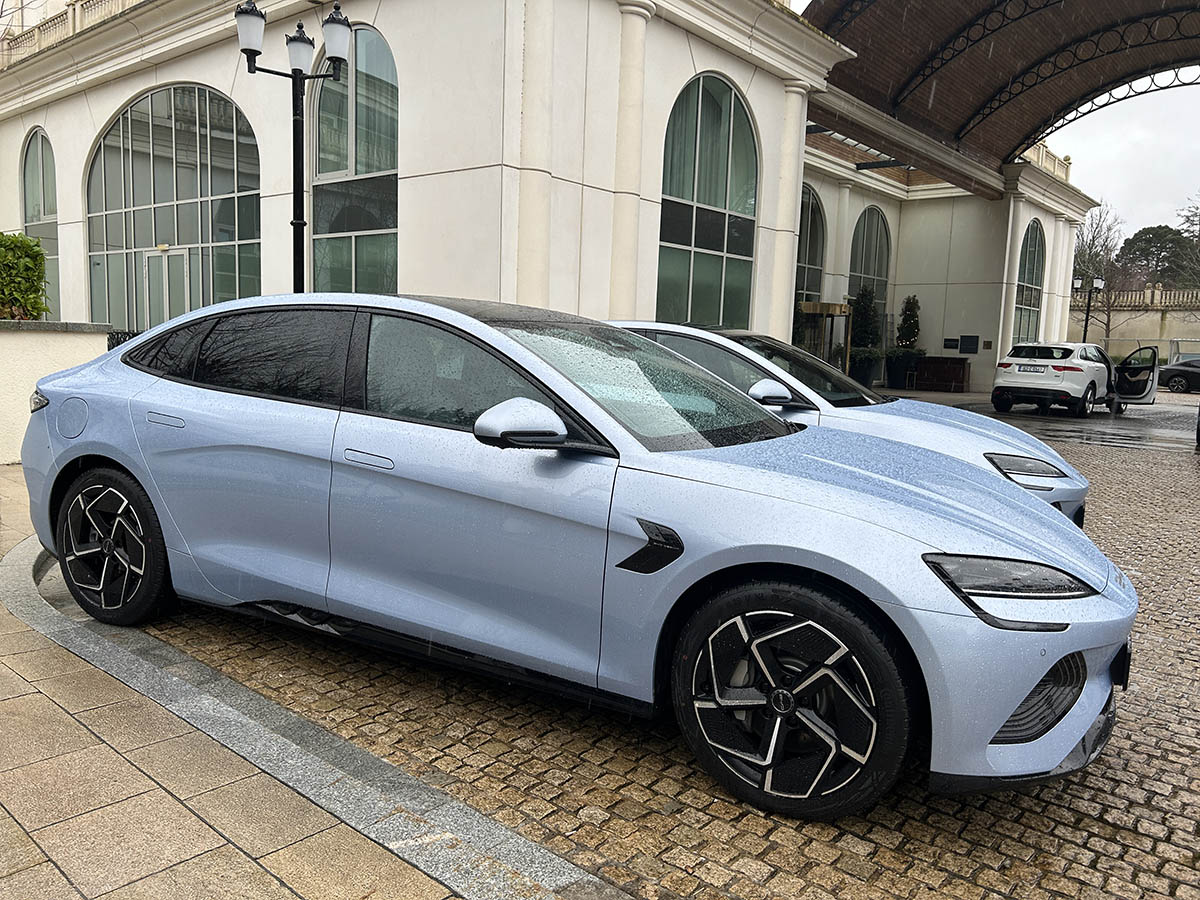BYD have launched their newest model onto the Irish market, with the Seal joining the existing Dolphin and Atto 3.
It could be said that the Seal rounds the introductory range off nicely, with the Atto being an SUV, the Dolphin a mid-size hatchback and the new Seal is a D-segment saloon, a rarity nowadays.
Like the other BYDs, the Seal is electric and I have to say it looks very striking, with its swooping lines, supposedly reminiscent of the ocean creature from which it takes its name. I’m not sure how like a Seal it looks, but it’s undeniably attractive and at 0.219 Cd, it’s probably as aerodynamic as any seal.
There are two variants, Design and Excellence, with the main difference being front or all wheel drive.
Battery and Power
Each is powered by an 82kWh blade battery. BYD are one of the biggest suppliers of batteries in the world and they reckon their cobalt-free example is among the best.
Design cars get a single 230kW motor while Excellence gets a second motor for a total output of 390kW. Claimed range is 570km from Design cars and a slightly reduced 520km range for the Excellence, which hits 100km/h from a standstill in 3.8 seconds.
150 kW charging is supported, offering a 30% to 80% top up in 26 minutes. An 11kW AC charger is also standard.
We had a brief drive in the Excellence model at the launch in Powerscourt, Co Wicklow. The weather was brutal so we really didn’t explore the performance on country roads but there’s definitely plenty of power on tap.
Interior and accommodation
The cabin is really pleasing, with our car featuring a light blue artificial leather covering, which sounds awful, but I really liked it.

Around the cabin, there are plenty of swoopy bits to continue the ocean theme and there’s the trademark 15” BYD central screen, which can switch from portrait to landscape at the touch of a button.
There’s certainly plenty of room both front and back and a 400 litre boot is augmented by a 53 litre ‘frunk’ to hold charging cables mainly. I felt the boot was quite small. It goes back a fair bit but the opening is a bit narrow and it’s not very high.
The drivers’ seat is electrically adjustable and there’s four way lumbar support also standard.
The ride is comfortable and the handling was secure, although exploring its road manners will have to wait for a longer test.
One curiosity that I didn’t like was the indicator and wiper stalks, which seem to have switched sides, the indicator on the right, which is contrary to every other car on the market. It goes back to the first Japanese cars on the market, before they switched over to the way everyone else was doing it. It seems a strange decision and having driven the Atto and Dolphin, neither of those cars have made the switch.
Equipment and Pricing
Standard equipment is generous and includes a heat pump for the cabin and to regulate the battery, front doors fitted with laminated glass for sound and heat insulation, rear privacy glass, two wireless charging pads, Android Auto/Apple Carplay, 12 speaker audio and OTA updates.

There’s a plethora of active driving safety features too, including forward collision warning, rear cross traffic alert and brake, lane keeping assist, adaptive cruise control, 360 degree panoramic camera and hill descent control.
Each Seal also comes with a six years manufacturer’s warranty and an eight years battery and electric motor warranty for peace of mind.
The Design model starts from €44,036 with the Excellence selling from €49,836, inclusive of Government grants.










